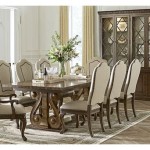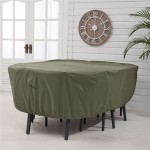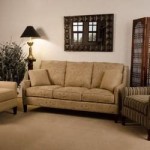How to Fix Broken Wood Furniture
Broken wood furniture, while often disheartening, is not necessarily destined for the landfill. With the correct tools, materials, and techniques, it is possible to repair damage and restore the piece to its former glory. This article provides a comprehensive guide to addressing common types of wood furniture damage, outlining the steps involved in each repair process.
Preparing for the Repair
Before commencing any repair, thorough preparation is crucial for a successful outcome. This involves assessing the damage, gathering the necessary tools and materials, and preparing the work area.
Damage Assessment: The first step is to carefully examine the damaged furniture to determine the type and extent of the damage. Common types of damage include:
- Breaks: Clean breaks where the wood has separated completely.
- Cracks: Fractures in the wood that have not fully separated.
- Splits: Longer, more pronounced cracks that often run along the grain.
- Dents: Depressions in the wood surface caused by impact.
- Scratches: Superficial abrasions on the surface finish.
- Veneer Damage: Lifting, bubbling, or missing sections of veneer.
- Loose Joints: Weakened or separated joints that cause instability.
Tools and Materials: The following tools and materials are commonly required for wood furniture repair:
- Wood Glue: High-quality wood glue is essential for bonding wood pieces. Choose a glue appropriate for the specific application, such as aliphatic resin glue (yellow glue) for general repairs or epoxy resin for stronger bonds and gap-filling.
- Clamps: Various types of clamps, including bar clamps, pipe clamps, and spring clamps, are needed to hold repaired pieces together while the glue dries. The size and type of clamp will depend on the size and shape of the furniture piece.
- Putty Knife: Used for applying wood filler or patching compounds.
- Sandpaper: A range of sandpaper grits, from coarse to fine, is needed for smoothing surfaces and preparing them for finishing.
- Wood Filler or Patching Compound: Used to fill gaps, cracks, and dents in the wood. Choose a filler that is compatible with the wood species and finish.
- Putty: For specific repairs to fill in small areas or cracks. It's applied and then cured, so it doesn't shrink like caulk.
- Wood Stain and Finish: Used to match the existing finish of the furniture and protect the repaired area. Choose stains and finishes that are compatible with the existing finish and the type of wood.
- Safety Glasses: To protect eyes.
- Dust Mask or Respirator: To avoid inhaling dust.
- Gloves: To protect hands.
- Clean Cloths: For wiping away excess glue and cleaning surfaces.
- Hammer and Wood Block: Useful for tapping pieces into place without damaging the wood.
- Screwdriver and/or Drill: For tightening or replacing screws in loose joints.
- Wood Scraps: For reinforcing weak areas or clamping irregular shapes.
- Razor Knife/Utility Knife: For trimming excess filler or adhesive.
Work Area Preparation: A well-lit and ventilated work area is essential. Protect the work surface with a drop cloth or newspaper to prevent damage from glue, stain, or finish. Ensure adequate space to move around the furniture and access all areas requiring repair. If sanding is required, consider using a vacuum cleaner or dust collection system to minimize dust exposure.
Repairing Broken Joints
Loose or broken joints are a common problem in wood furniture. They can cause instability and make the furniture unsafe to use. Repairing these joints typically involves disassembling the joint, cleaning the surfaces, applying fresh glue, and reassembling the joint.
Disassembly: Carefully disassemble the joint, if possible. This may involve removing screws, nails, or other fasteners. If the joint is glued, gently tap it with a hammer and wood block to loosen the glue. Avoid using excessive force, which could damage the wood.
Cleaning: Once the joint is disassembled, thoroughly clean all surfaces with a scraper or sandpaper to remove old glue residue and debris. This will ensure a strong bond with the new glue. Degrease the surfaces if they are oily or contaminated.
Gluing and Clamping: Apply a generous amount of wood glue to all mating surfaces of the joint. Reassemble the joint and clamp it securely in place. Use clamps appropriate for the size and shape of the joint. Ensure that the joint is aligned correctly before tightening the clamps. Wipe away any excess glue with a damp cloth. Allow the glue to dry completely according to the manufacturer's instructions, typically 24 hours.
Reinforcement (Optional): For added strength, consider reinforcing the joint with screws or dowels. Drill pilot holes for the screws to prevent the wood from splitting. Insert dowels into pre-drilled holes and glue them in place.
Repairing Breaks, Cracks, and Splits
Breaks, cracks, and splits can weaken the structural integrity of the furniture and detract from its appearance. Repairing these types of damage involves gluing the pieces back together, filling any gaps, and refinishing the area.
Gluing: Apply wood glue to both surfaces of the break, crack, or split. If the break is clean, align the pieces carefully and clamp them together. If the break is uneven or contains missing pieces, use wood filler or patching compound to fill the gaps. Clamp the pieces securely in place and allow the glue to dry completely.
Filling Gaps: Once the glue is dry, use a putty knife to apply wood filler or patching compound to any remaining gaps or cracks. Overfill the area slightly, as the filler will shrink as it dries. Allow the filler to dry completely according to the manufacturer's instructions.
Sanding: Use sandpaper to sand the filled area smooth and flush with the surrounding surface. Start with a coarse grit sandpaper to remove excess filler and then gradually move to finer grits to achieve a smooth finish. Be careful not to sand away the surrounding finish.
Refinishing: Apply wood stain and finish to the repaired area to match the existing finish of the furniture. Start by applying a stain that closely matches the color of the wood. Allow the stain to dry completely and then apply several coats of finish, sanding lightly between coats. Use a brush or spray applicator to apply the finish evenly.
Addressing Veneer Damage
Veneer, a thin layer of wood glued to a substrate, is often used on furniture for decorative purposes. Damage to veneer can be unsightly and require specialized repair techniques.
Re-gluing Loose Veneer: If the veneer is lifting or bubbling but still intact, it can often be re-glued. Carefully lift the veneer and apply wood glue to the underside. Use a veneer scraper or iron to smooth the veneer and remove any air bubbles. Cover the veneer with wax paper and clamp it in place until the glue dries.
Replacing Missing Veneer: If the veneer is missing, it will need to be replaced. Obtain a piece of veneer that matches the wood species and grain pattern of the existing veneer. Cut the replacement veneer to the correct size and shape using a sharp utility knife. Apply wood glue to the substrate and the back of the replacement veneer. Position the veneer carefully and clamp it in place until the glue dries. Trim any excess veneer with a utility knife and sand the edges smooth.
Refinishing Patched Veneer: After repairing or replacing veneer, refinishing the area is necessary to blend the repair with the surrounding surface. Start by sanding the repaired area smooth. Apply wood stain to match the color of the existing veneer. Allow the stain to dry completely and then apply several coats of finish, sanding lightly between coats.
Creating a Patch: Obtain a slice of veneer that matches the surrounding grain and color as closely as possible. Using a sharp razor blade or utility knife, carefully cut away the damaged veneer in a square or rectangular shape. Trace the shape onto the replacement veneer and cut it out slightly larger than the removed piece. Test-fit the patch and trim as needed for a snug fit. Apply wood glue to the back of the patch and the exposed substrate. Position the patch carefully and cover it with wax paper. Use a flat block of wood and clamp it down to apply even pressure. Allow the glue to dry completely. Once dry, carefully trim any excess veneer with a sharp blade and sand the edges smooth until flush with the surrounding surface. Refinish the area to blend the patch seamlessly.
Dealing with Dents and Scratches
Dents and scratches are common occurrences on wood furniture surfaces. Minor dents can often be removed using steam, while scratches can be concealed with touch-up markers or refinishing.
Removing Dents with Steam: Cover the dent with a damp cloth and apply heat from a clothes iron. The steam will cause the wood fibers to swell and the dent to disappear. Repeat the process as needed until the dent is gone. Be careful not to overheat the wood, which could cause it to warp or crack.
Concealing Scratches: Minor scratches can often be concealed with touch-up markers or wax sticks that match the color of the furniture finish. Apply the marker or wax stick to the scratch and wipe away any excess. For deeper scratches, consider using a wood stain or finish to blend the scratch with the surrounding surface.
Refinishing Scratched Surfaces: If scratches are extensive or do not respond to touch-up methods, refinishing the entire surface may be necessary. Sand the surface smooth and apply a new coat of stain and finish. Follow the manufacturer's instructions for applying the stain and finish.
Using a Steam Iron: Start by placing a damp cloth (such as a clean rag or towel) over the dent. Set a steam iron to a low-to-medium setting and gently press it over the damp cloth covering the dent. The steam and heat will help to swell the compressed wood fibers and raise the dent. Avoid using excessive heat or leaving the iron in one spot for too long to prevent scorching or damaging the wood. Lift the cloth periodically to check the progress. Repeat the process as needed until the dent is raised as much as possible. Allow the area to dry completely, and then lightly sand if necessary to smooth out any remaining imperfections. This method works best on dents that haven't severed wood fibers.
Preventative Measures
Prevention is always better than cure. Taking proactive steps can significantly reduce the likelihood of damage to wood furniture.
Proper Handling and Moving: When moving furniture, lift it carefully and avoid dragging it across the floor. Use furniture pads or sliders to protect the legs and feet. Distribute the weight evenly to prevent stress on joints and surfaces.
Climate Control: Extreme changes in temperature and humidity can cause wood to expand and contract, leading to cracks and splits. Maintain a stable indoor climate by using a humidifier or dehumidifier as needed.
Regular Cleaning and Maintenance: Dust furniture regularly with a soft cloth to prevent the buildup of dirt and grime. Use a furniture polish or wax to protect the finish and keep it looking its best. Avoid using harsh chemicals or abrasive cleaners, which could damage the finish.
Using Protective Pads: Place felt pads under furniture legs to prevent scratches on floors. Use coasters under drinks to protect surfaces from water rings. Place placemats under hot dishes to prevent heat damage.
By understanding the principles of wood furniture repair and following these guidelines, it's possible to address a wide range of damage and restore beloved pieces to their original beauty. With patience and attention to detail, even seemingly irreparable damage can be overcome, extending the life of wood furniture for years to come.

How To Repair Broken And Cracked Wood Woodworking Tips From Fixing Furniture Youtube

How To Repair Wood Furniture Girl In The Garage

A Beginner S Guide To Repairing Broken Wood The Created Home

A Beginner S Guide To Repairing Broken Wood The Created Home
How To Reattach A Broken Piece Of Wood Ifixit Repair Guide

How To Save Repair Furniture By Rebuilding The Damage Area

The Best Way To Fix Chipped Wood Furniture

Furniture Makeover How To Repair Broken Corners On Little House Of Four Creating A Beautiful Home One Thrifty Project At Time

How To Repair Broken Wood

Repair A Broken Chair Rung 4 Steps With S Instructables
See Also








